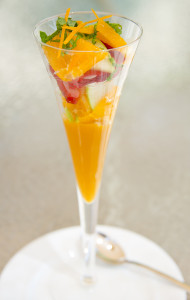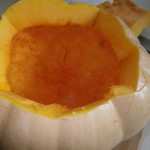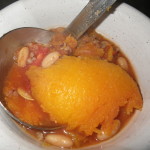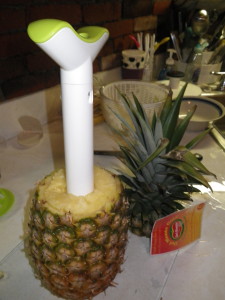
I’m stealing this idea from a local produce market. They do a great job promoting their foods on Facebook and Twitter. Each week they ask a question they call the Produce Puzzler and offer food prizes for the person answering correctly.
The question last week was: “What fruit is consumed more than any other fruit in the world?”
Now I’m sure I could have cheated and searched the web for the answer. However, I felt fairly sure about the first idea that popped into my mind. So I responded: banana.
Other people were saying apples, tomatoes and mangos. There were lots of people that said mango. I wondered to myself, have these folks ever priced a mango?
I was wrong. The market claimed that mango was the correct answer. (Could all those people be that much smarter than me or did they “Google” the answer?)
Their source was James Scherrer @ Banderasnews.com (a newsletter out of Puerto Vallarta). He claims that worldwide mangos are consumed 3 to 1 over bananas and 10 to 1 over apples.
I didn’t believe that. So I kept looking.
Wiki.answers.com questions that answer, too. They say it’s the tomato. While it is technically a fruit, most of us consider the tomato a vegetable and while lots are consumed worldwide, most are consumed in a cooked product.
Anwser.com agrees with me about the banana. They state that there are 95 million tons of bananas produced per year. In terms of price, availability, ease in eating and what people like, you can’t beat a banana.
They also say that “mangoes are the world’s most popular fruit” because many of mangoes are grown in home gardens, not produced commercially or imported to America.
Ask.com agrees that it’s the mango, stating that they are “the most eaten fruit worldwide, being staples in diets in India, South Asia, China and Latin America, while we in America still consider them an “exotic” fruit” (thus the price.)
I’m assuming that mangoes must be much cheaper and more readily available in other parts of the world. I remember once while traveling in the Bahamas, I was delighted with the two (yes, two) mangoes in the packed lunch prepared for me by the hotel. I commented about that being such a treat, telling the staff that these fruit usually cost over $1 each in our stores. They just laughed at me saying they grew all over the island.
If you look at this question just a little differently, what is the most popular fruit in the United States, mangoes don’t even make the top 10. Apples top that list. Bananas are up there, too.
I’m really not sure of the statistics or the correct answer for the question of the “most consumed” fruit in the world. This could be a fun tip for parents – what is the most popular fruit at your house? Buy a bunch, take a poll and have fun. The best part is everyone wins with increased fruit consumption.
It could also be good for work-site wellness programs – take a poll on favorite fruits and post the answers. Maybe different departments have different favorites.
Here’s a great recipe from Chef Judy for a Vanilla Custard Sauce that turns these favorite fruits into a fancy dessert. Hint: it’s great with mangoes and bananas. http://www.foodandhealth.com/recipes.php?id=1133
You can also serve mangoes and other fresh fruits in a tall glass with chopped mint for an elegant dessert.
Well, I’m not going to complain to the market, dispute their facts or try to claim the prize. But, just wait till next week’s question.
Cheryle Jones Syracuse, MS
Professor Emeritus, The Ohio State University









